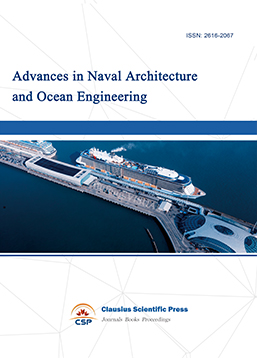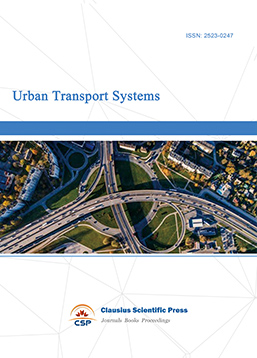The Current Status and Development Trends of Bridge Inspection Technology in Bridge Inspection and Evaluation
DOI: 10.23977/ftte.2024.040112 | Downloads: 31 | Views: 1784
Author(s)
Wenjie Yang 1,2, Gongxing Yan 3, Wangming Wu 4, Xiaoping Zou 1, Yuhu Sun 4
Affiliation(s)
1 Sichuan Jinghengxin Construction Engineering Testing Co., Ltd, Luzhou, 646000, China
2 School of Materials Science and Engineering, Wuhan Institute of Technology, Wuhan, 430205, China
3 School of Intelligent Construction, Luzhou Vocational and Technical College, Luzhou, 646000, China
4 Aneng Third Bureau Chengdu Engineering Quality Testing Co., Ltd, Chengdu, 611130, China
Corresponding Author
Gongxing YanABSTRACT
With the increasing expansion and improvement of the transportation network, the durability of bridges, as an important transportation infrastructure connecting urban and rural areas and crossing rivers and canyons, is directly related to the safety of people's lives and properties and the stable development of society. This paper firstly introduces the background and significance of bridge inspection technology in detail, and then deeply analyzes the current problems and challenges in bridge inspection and evaluation. Then, this paper elaborates the research contents and methods of this paper, including the comprehensive and accurate inspection of bridges using advanced inspection technology, the processing and analysis of inspection data using big data and artificial intelligence technology, and the construction of bridge safety assessment model. Through these studies, this paper proposes an efficient bridge inspection and assessment method to provide a strong guarantee for the safe operation of bridges. Through experimental investigation, the accuracy of its bridge inspection technology fluctuates between 93.5% and 98.4%; while the efficiency is always above 80%, which fully demonstrates the high efficiency of ultrasonic technology in bridge inspection. This paper finds that the efficiency and accuracy of bridge inspection can be greatly improved by adopting advanced inspection technology. At the same time, combined with big data and artificial intelligence technology, rapid processing and analysis of bridge inspection data can be realized, providing strong support for bridge safety assessment.
KEYWORDS
Bridge Inspection, Inspection and Evaluation, Development Trend, Current DevelopmentCITE THIS PAPER
Wenjie Yang, Gongxing Yan, Wangming Wu, Xiaoping Zou, Yuhu Sun, The Current Status and Development Trends of Bridge Inspection Technology in Bridge Inspection and Evaluation. Frontiers in Traffic and Transportation Engineering (2024) Vol. 4: 97-105. DOI: http://dx.doi.org/10.23977/ftte.2024.040112.
REFERENCES
[1] Nguyen D C, Nguyen T Q, et al. BIM-based mixed-reality application for bridge inspection and maintenance[J]. Construction Innovation, 2022, 22(3): 487-503.
[2] Bertola N J, Brühwiler E. Risk-based methodology to assess bridge condition based on visual inspection[J]. Structure and Infrastructure Engineering, 2023, 19(4): 575-588.
[3] Li Y, Karim M M, Qin R. A virtual-reality-based training and assessment system for bridge inspectors with an assistant drone[J]. IEEE transactions on human-machine systems, 2022, 52(4): 591-601.
[4] Figueiredo E, Brownjohn J. Three decades of statistical pattern recognition paradigm for SHM of bridges[J]. Structural Health Monitoring, 2022, 21(6): 3018-3054.
[5] Malekloo A, Ozer E, AlHamaydeh M, et al. Machine learning and structural health monitoring overview with emerging technology and high-dimensional data source highlights[J]. Structural Health Monitoring, 2022, 21(4): 1906-1955.
[6] Akinlolu M, Haupt T C, Edwards D J, et al. A bibliometric review of the status and emerging research trends in construction safety management technologies[J]. International Journal of Construction Management, 2022, 22(14): 2699-2711.
[7] Sabato A, Dabetwar S, Kulkarni N N, et al. Noncontact sensing techniques for AI-aided structural health monitoring: a systematic review[J]. IEEE Sensors Journal, 2023, 23(5): 4672-4684.
[8] Gharehbaghi V R, Noroozinejad Farsangi E, Noori M, et al. A critical review on structural health monitoring: Definitions, methods, and perspectives[J]. Archives of computational methods in engineering, 2022, 29(4): 2209-2235.
[9] Gupta M, Khan M A, Butola R, et al. Advances in applications of Non-Destructive Testing (NDT): A review[J]. Advances in Materials and Processing Technologies, 2022, 8(2): 2286-2307.
[10] Xu J G, Feng D C, Mangalathu S, et al. Data‐driven rapid damage evaluation for life‐cycle seismic assessment of regional reinforced concrete bridges[J]. Earthquake Engineering & Structural Dynamics, 2022, 51(11): 2730-2751.
[11] Schaap H S, Caner A. Bridge collapses in Turkey: causes and remedies[J]. Structure and Infrastructure Engineering, 2022, 18(5): 694-709.
[12] Pan Y, Zhang L. Integrating BIM and AI for smart construction management: Current status and future directions[J]. Archives of Computational Methods in Engineering, 2023, 30(2): 1081-1110.
[13] Mihai S, Yaqoob M, Hung D V, et al. Digital twins: A survey on enabling technologies, challenges, trends and future prospects[J]. IEEE Communications Surveys & Tutorials, 2022, 24(4): 2255-2291.
[14] Garg R K, Chandra S, Kumar A. Analysis of bridge failures in India from 1977 to 2017[J]. Structure and Infrastructure Engineering, 2022, 18(3): 295-312.
[15] Wang Y, Tian Y, Wang J, et al. Integrated inspection of QoM, QoP, and QoS for AOI industries in metaverses[J]. IEEE/CAA Journal of Automatica Sinica, 2022, 9(12): 2071-2078.
[16] Usiagu G S, Adekoya O O, Okoli C E, et al. LNG as a bridge fuel in the transition to renewable energy: A global perspective [J]. World Journal of Advanced Research and Reviews, 2024, 21(2): 742-749.
[17] Palakurti N R. Bridging the Gap: Frameworks and Methods for Collaborative Business Rules Management Solutions [J]. International Scientific Journal for Research, 2024, 6(6): 1-22.
[18] Nejad A R, Keller J, Guo Y, et al. Wind turbine drivetrains: state-of-the-art technologies and future development trends [J]. Wind Energy Science, 2022, 7(1): 387-411.
[19] Macchiarulo V, Milillo P, Blenkinsopp C, et al. Monitoring deformations of infrastructure networks: A fully automated GIS integration and analysis of InSAR time-series[J]. Structural Health Monitoring, 2022, 21(4): 1849-1878.
| Downloads: | 748 |
|---|---|
| Visits: | 48255 |

 Download as PDF
Download as PDF


